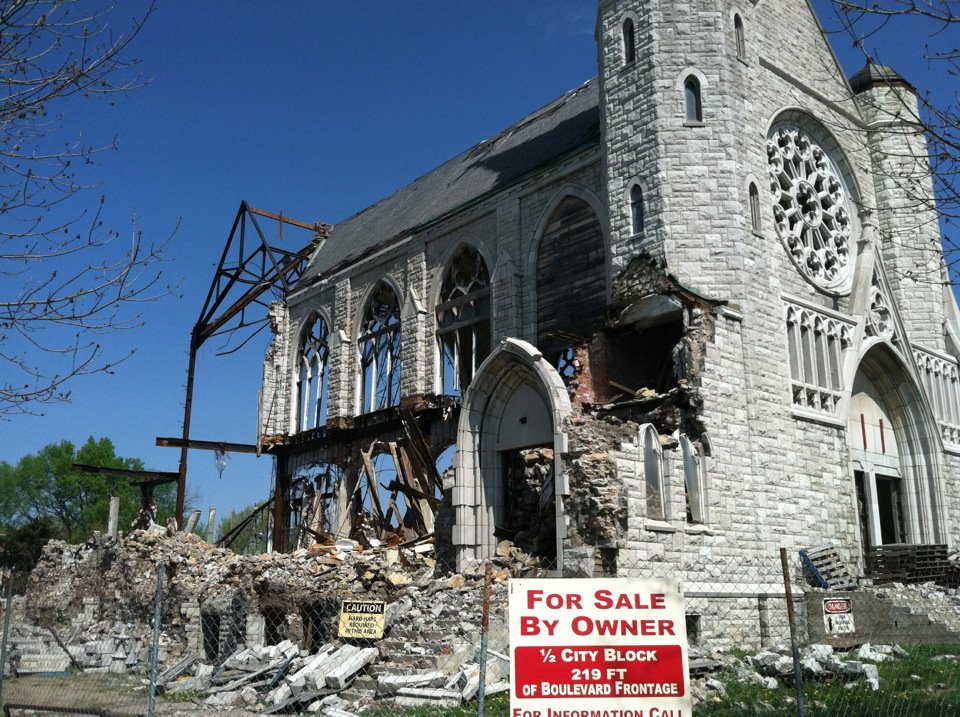Churches die.
This is a simple fact. Many churches who will be gathering together this coming Sunday will not be gathering next Sunday. So what do we make of this?
Options for Dying Churches
Dying churches have several options, and to be sure, they often don’t exhaust these options because of anxiety related to change, fear of the unknown and at times even pride and bitterness which may pervade the remaining members. But options nevertheless remain. It is possible for a church to “die with dignity.” For example, a dying church can hand over its facilities and resources to a budding and healthy church plant. A dying church can also be absorbed into a larger and healthier church.
But there is one other option that is in my experience often superior to all others in the case of dying churches: they can be resuscitated! This is a possibility that is often avoided, and it’s not difficult to understand why. Revitalizing a dying church is hard! It’s costly. It’s slow-going. But it is certainly worthwhile.
“Death Is Unavoidable”?
The second law of thermodynamics applies to everything in this fallen world; things do fall apart. And for many people it seems that for a church to die is natural. But—and hear me, because this is crucial to understand—Christianity is not natural! Death is natural, but the gospel is the good news that the God-Man died and didn’t stay that way! Christianity is fundamentally an unnatural ideology, and this unnatural ideology is perfectly represented through church revitalizations. In the eyes of this world, the most counterintuitive thing for Christians to do is work hard to salvage a dying organization, especially when simply killing it and starting over would be easier and more immediately expedient. And this precisely why Christians should in fact do this great work.
To be sure, the propensity to die is unavoidably present in every church. But this propensity is a fallen principle that it is inconsistent with the gospel. In its core, the gospel works in the opposite direction. Through the gospel, dead people are brought to life (Ephesians 2:4-10). Through the gospel, the dividing walls of hostility which divide people are demolished (Ephesians 2:11-22). Through the gospel, people trade their collective behavior of anger, wrath and malice for the collective behavior of compassion, kindness and humility, and they trade their natural tribal identities for one collective identity in Christ (Colossians 3:5-17). You see, the gospel produces the opposite of death and decay, and it is in this that God is glorified (Ephesians 3:14-21)!
There are of course instances where a community that once existed and was served by a local church is now gone. These would include some mill towns, mining towns and agricultural villages that have long ago disappeared, or even urban communities that were once neighborhoods and have become industrial or commercial centers. If the people who were served by that local church are gone then yes, that local expression of church may cease as well.
But if there is a community to be reached (even if that community has changed in its ethnicity and culture) and if the church remains obedient to the Lordship of Jesus and the message of the gospel, there is nothing “natural”—in the distinctly Christian sense—about that church dying.
It’s almost undisputed among Christians that the chief end of man is to glorify God and enjoy him forever. Question: how is God most glorified? Answer: he is most glorified in his masterpiece; his grand mosaic of bringing people from seemingly irreconcilable backgrounds, under seemingly irreconcilable circumstances, into a loving community. In short, God is most glorified in the church (Ephesians 3:10).
Make no mistake, God is more glorified in dying churches who swing back into full vitality than in dying churches who go out with a quiet croak.
How Churches Really Die
In the whole of the New Testament, there are no passages that describe the life cycle of a church. In fact in the Scripture there is only one passage that describes the potential death of churches. And do you know how they are in danger of dying? Is it that they’ve simply “run their course”? Is it that they’ve simply “run out of steam”? Perhaps “Became disconnected from the community”? “Oh well, these things happen”? On the contrary; these churches are in danger of dying because Jesus is threatening to kill them (so to speak). Chapters two and three of Revelation document King Jesus calling 7 churches to faithfulness, and the judgement which will result from their refusal to repent is that Jesus will “remove their lampstands.” (Revelation 2:5) Did you catch that? Churches don’t die because they unavoidably have an expiration date on them; churches die because Jesus judges them. When a church fails to submit to the Lordship of Jesus and when a church cares more about their own comfort then sharing the gospel with a lost world that church will die. And it will be Jesus who brings about its death as a judgment for their disobedience.
On the flipside, this means that as long as a church is made up of Christians, revitalization is still an option. Repentance brings life on the individual level, and the same is true on the corporate level. For a dying church, repentance may look like calling a pastor who will come in and cast out the cherished idols of control and pride. Repentance may look like a church adopting an entirely new ecclesiastical structure that reflects trust in the leadership. Repentance may look like finally selling that extra plot of unused land that the church owns but doesn’t use and using the proceeds for kingdom work.
Repentance may look like subordinating our preferences in organization, ministry approach, building use and worship style in order to reach unreached people. Repentance may take on many different forms in a dying church, but the principle is simple: where repentant hearts are represented, there is hope for a flourishing church that will come back from the brink of death to life and make disciples who make disciples for God’s glory. There was a promise for every church in Revelation. And there is a promise for every church today.
Published March 16, 2016




